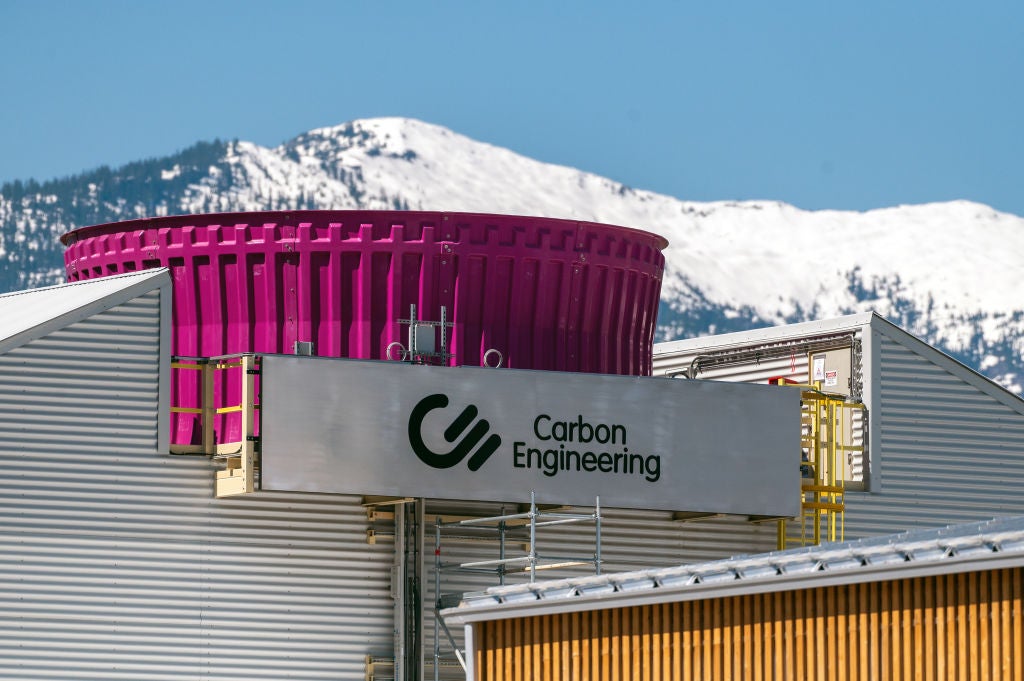The US Department of Energy (DoE) has announced plans to invest up to $1.2bn to advance the development of two commercial-scale direct air capture (DAC) projects.
The DoE selected Project Cypress in Louisiana, operated by a partnership between technology NGO Battelle, DAC developer Climeworks and carbon removals company Heirloom Carbon Technologies, as the first recipient of the funding. The second facility chosen for the grant, located in Texas, is run by 1PointFive, a subsidiary of energy company Occidental (Oxy), and its partners Carbon Engineering and Worley.
According to the DoE, the projects represent the initial selections from President Biden's Bipartisan Infrastructure Law-funded Regional Direct Air Capture Hubs programme. The programme aims to lay the groundwork for a national network of large-scale carbon removal sites to address legacy CO₂ pollution and help with emissions reductions.
Combined, the two facilities are expected to remove more than two million metric tonnes of CO₂ from the atmosphere each year. The projects will create approximately 4,800 local jobs in Texas and Louisiana, according to the department.
The investment will be the largest in the world in engineered carbon removal to date. US Secretary of Energy Jennifer M. Granholm said in a statement: “Cutting back on our carbon emissions alone won’t reverse the growing impacts of climate change; we also need to remove the CO₂ that we’ve already put in the atmosphere – which nearly every climate model makes clear is essential to achieving a net-zero global economy by 2050.”
“With this investment, made possible by President Biden’s Investing in America agenda, DoE is laying the foundation for a direct air capture industry crucial to tackling climate change – transforming local economies and delivering healthier communities along the way,” she added.
The DoE estimates that to reach President Joe Biden’s net-zero targets, between 400 million and 1.8 billion metric tonnes of CO₂ must be removed from the atmosphere and captured from emissions sources annually by 2050.
A spokesperson for 1PointFive said in a statement that the funding from the DoE will enable the company and its partners to enter award negotiations with the DoE’s Office of Clean Energy Demonstrations. Additional funding will support the company’s development of its DAC Hub through the advancement of planning, detailed design, environmental permitting and procurement of long-lead equipment.
“We appreciate the US Department of Energy’s leadership to advance Direct Air Capture and look forward to our partnership to deploy this vital carbon removal technology at climate-relevant scale and establish the United States and 1PointFive as global leaders in demonstrating the commercial viability of DAC,” said 1PointFive president and CEO Vicki Hollub. “We believe this selection validates our readiness, technical maturity and the ability to use Oxy’s expertise in large projects and carbon management to move the technology forward so it can reach its full potential.”
Amy Ruddock, European vice-president of Carbon Engineering, said in a recent interview with Offshore Technology sister site Energy Monitor that DAC targets from the International Energy Agency to capture 60 megatonnes of CO₂ per year by 2030 are feasible, but improved legislation and funding is needed to advance the technology.
“When you are building these plants, you need to know where your revenue is going to come from," she said. "What is the demand market today? There are tax credits available in the US that will give you $180/t) for doing DAC from the atmosphere, and that is great, but to get to the scale of 60 or 100Mt per year, you need compliance markets.”
“Technologically, it is a challenge, but it is possible,” Ruddock added. “The real question is how compliance markets are going to support that level of buildout.”









